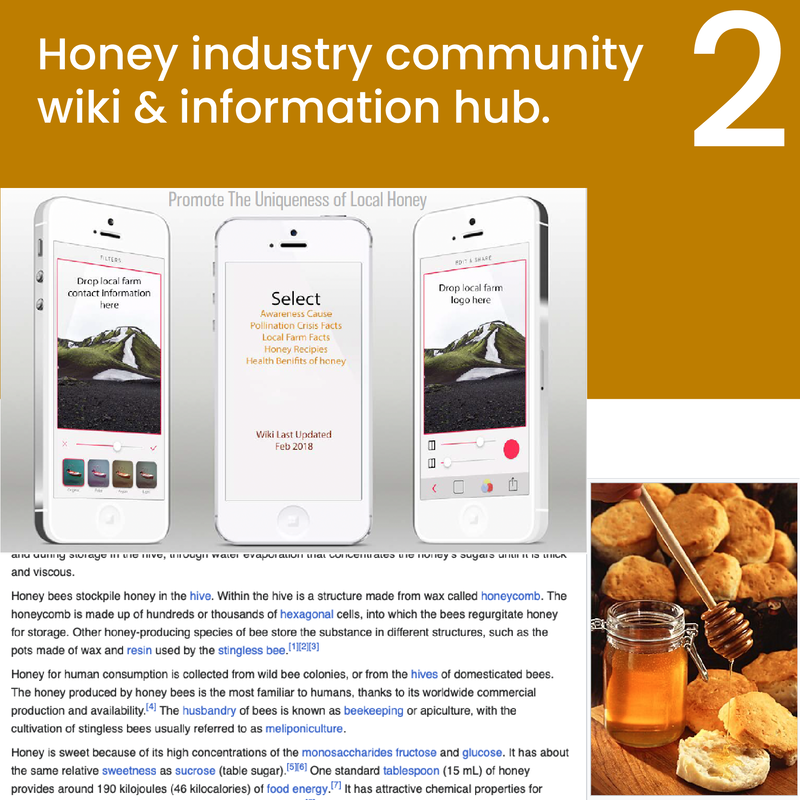THE CONTEXT
Honey is a sweet, golden commodity that plays a vital role in our economic and ecological systems. Bees produce honey from the sugary secretions of plants through regurgitation, enzymatic activity, and water evaporation. Dating back 8000 years, honey has secured a special place in almost every culture and country globally. However, the natural value of honey is often overshadowed by industry giants, from artificial consumable products to, climate change, and pesticides that harm bee populations. Local organic farmers need an awareness campaign to secure a market position and grow consumer participation in honey culture.
|
THE CHALLENGES
|
The primary challenge for bee farmers lies in the absence of a streamlined way to connect with each other and with local industry partners, compounded by the difficulty consumers face in easily identifying their products in the marketplace. This communication and recognition gap is particularly pressing in the context of environmental shifts, which significantly impact bee health and honey production. Without a cohesive network for collaboration, information exchange, and clear market visibility, these farmers find it difficult to develop sustainable practices, maintain economic viability, and ensure their products stand out to consumers. Bridging these gaps is crucial, enabling them to collectively navigate and adapt to the evolving challenges of their industry while ensuring consumers can readily identify and choose their products.
|
|
HOW MIGHT WE....
|
|
THE OBJECTIVE
This project aimed to develop and successfully implement a dual-faceted solution that revolutionized the honey industry's approach to internal communication, marketing, and product design.
|
The first facet involved creating an innovative industrial design for honey packaging – a series of uniquely designed honey vessels that not only preserved the quality of the product but also resonated with the ethos of sustainability and local sourcing. These vessels were tailored to be instantly recognizable as locally grown organic honey, and to enhance user experience, ensuring ease of use and minimizing waste, while their distinctive design served as a powerful brand differentiator in the market.
|
The second facet of the project focused on developing a comprehensive digital and print marketing campaign. This included the establishment of an industry-specific wiki platform, connecting local bee farmers directly with the broader industry and consumers. The platform served as a hub for knowledge sharing and community engagement, emphasizing critical issues like climate awareness and the pollination crisis. The marketing efforts extended beyond the digital realm, incorporating targeted print campaigns to amplify the message and reach a broader audience.
|
Through this integrated approach, the project successfully established a new paradigm in the honey industry, combining innovative industrial design with a dynamic, informative marketing strategy.
PRIMARY
|
Research Methods:
|
IDEATION PROCESS
|
I reframed the challenges and defined the problem based on the secondary and primary research findings. Then designed a working wall (now created in Figma / Miro), for full data synthesis.
These findings allowed for segmenting our target audiences and developing customized marketing strategies driving each effort towards our common goal. A full digital marketing strategy was successfully developed along with a physical packaging solution that brings a unique identity to locally grown honey, along with an awareness campaign for local business partners, and the bee ecosystem conditions. |









